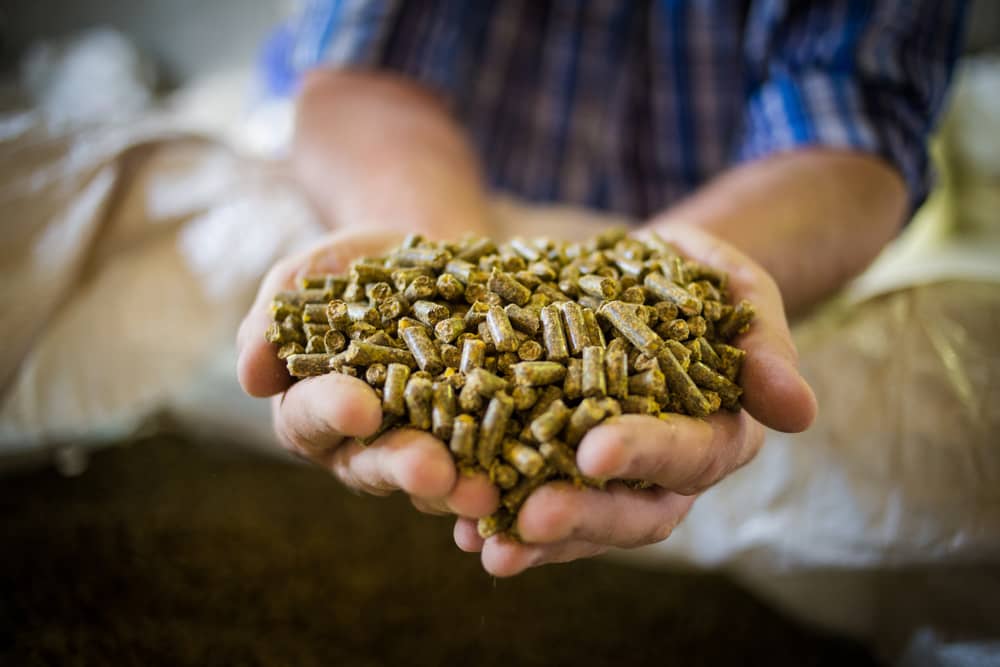On March 17, 2022, Japan’s Ministry of Health, Labor, and Welfare established MRLs for Zeranol in food producing animals. It is already in force for those products placed on the Japanese market.
Zeranol (α-Zearalanol) (CAS # 26538-44-3) is derived from Zearalenone, a mycotoxin produced by Fusarium (a fungi species) on many grain crops including corn, wheat, sorghum, and barley. Currently, it is produced commercially and widely used to improve feed conversion efficiency and promote growth rates in livestock production. However, the application of Zeranol to food producing animals has raised public health concerns due to its potentially endocrine disrupting properties. In order to protect consumers from the risk of residues, the main beef exporting countries, such as the USA, Canada, Australia, and New Zealand have established maximum residue limits (MRLs) for Zeranol, whereas EU has banned it[1]. Recently, Zeranol has been approved for use in animal products and seafood by the Ministry of Health, Labor, and Welfare of Japan and its MRL set[2] as shown in Table 1.
Screening for Zeranol can be carried out by enzyme-linked immunosorbent assay (ELISA) as the results are rapid, and cost-effective. Nonetheless, complex foods may be affected by unreliable results from this technique. Therefore, liquid chromatography coupled with tandem mass spectrometry (LC-MS/MS) is strongly recommended for result confirmation in the laboratory because of its high selectivity, specificity and sensitivity..
Table 1 Japan’s MRLs for Zeranol in animal products.
| Animal Species | Target tissue | MRLs (ppm) |
| Bovine, pig, chicken, crustacean, fish, other terrestrial, poultry and aquatic animals |
Muscle | 0.002 |
| Bovine, pig, chicken, crustacean, fish, other terrestrial and poultry |
Fat | 0.002 |
| Cattle and other terrestrial animal | Liver, kidney, edible offal |
0.01 |
| Pig, chicken, and other poultry | Liver, kidney, edible offal |
0.002 |
| Chicken and other poultry | Egg | 0.002 |
| Cattle | Milk | 0.002 |
| Bee | Honey | 0.002 |
What do these changes mean?
This update has the potential to affect farms and food manufacturers. Food products destined for Japan, if listed in Table 1, must not have residues of Zeranol exceeding the MRLs. Complying with food safety regulations can be a complex, time-consuming and expensive process. Food producers should seek professional advice.
SGS is committed to keeping you informed of regulation news and developments. Leveraging our global network of laboratories and food experts, SGS provides a comprehensive range of food safety and quality solutions, including analytical tests, audits, certifications, inspections, and technical support. We continually invest in our testing, capability, and state-of-the art technology to help you reduce risk, improve food safety and quality. For furthermore information, please visit our website: www.sgs.com/foodsafety
For enquiries, please contact
Amornpun Dejsiripun
Global Food Technical Support Center
T: +66 2683 0541 ext. 2423
© SGS Group Management SA - 2022 - All rights reserved - SGS is a registered trademark of SGS Group Management SA. This is a publication of SGS, except for 3rd parties’ contents submitted or licensed for use by SGS. SGS neither endorses nor disapproves said 3rd parties contents. This publication is intended to provide technical information and shall not be considered an exhaustive treatment of any subject treated. It is strictly educational and does not replace any legal requirements or applicable regulations. It is not intended to constitute consulting or professional advice. The information contained herein is provided “as is” and SGS does not warrant that it will be error-free or will meet any particular criteria of performance or quality. Do not quote or refer any information herein without SGS’s prior written consent.





.webp?width=1644&height=1254&name=Food%20Safety%20Dashboard%201%20(1).webp)
